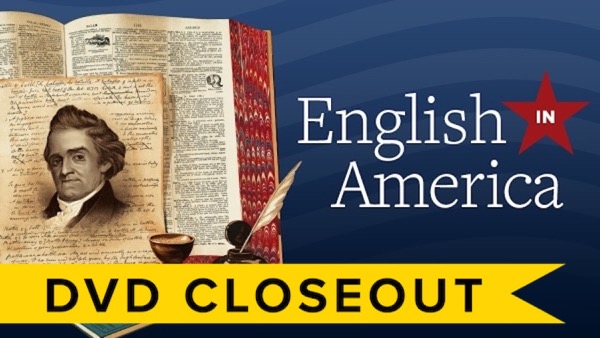


If we approach language not as grammarians – as guardians of proper usage–but as scientists–as linguists–then we need to study human language as it really is, not how we think it should be.
Institution: Georgetown University
Alma mater: The University of North Carolina, Chapel Hill
Think about this: How would you address a group of two or more people? Would your default terminology be: ”you all,” “yous,” ”you lot,” “you guys,” “you’uns,” “yinz,” “you,” “y’all,” or something else? Would that change depending on whom you were talking to or where you were using it? What do you call a long sandwich that contains cold cuts and vegetables? Is it a “sub,” “grinder,” “hoagie,” “hero,” “poor boy,” “bomber,” “Italian sandwich,” or something else? Your answers can provide revealing insights about who you are, where you grew up or live now, and your social, economic, and educational background.
Welcome to the enthralling world of linguistics. If you’ve ever been curious how words like “awesomesauce” ever came to be, let alone made it into the Oxford English Dictionary, or if you’ve ever wondered why you say “firefly” and someone else calls the same insect a “lightning bug,” English in America: A Linguistic History is for you.
There’s an incredibly rich and colorful history behind American English. A profoundly diverse assortment of cultures and heritages has influenced our vocabulary, pronunciation, and grammar, and the language continues to grow and shift. Dialect variations are widespread and actually increasing, and the new words, accents, and sentence structures both reflect and shape changes in our culture and society. Investigating these dialects is the domain of sociolinguistics, the study of the intricate interrelation between language variation and cultural, interpersonal, and personal identity. At the forefront of the study of American English dialects is Natalie Schilling, Associate Professor of Linguistics at Georgetown University, who guides you on this intriguing and enlightening journey.
The ABCs of American Vocabulary: Absorbing, Borrowing, and Creating
Start by exploring the dialects of English in our first colonies, and learn how settlers adopted many Native American words for locations, foods, and more. As you travel through the 18th, 19th, and 20th centuries, you’ll see how accents shifted, grammar changed, and new words were coined. These changes were often connected to the cultural, technological, and political phenomena of the time. You’ll delve into the early formative period of American English, when it was influenced by Spanish, French, and Dutch colonists as well as many Native American languages and the West African languages of slaves. You’ll also examine the effects of later immigration, as English speakers absorbed foreign words and sayings to add nuance, color, and expressiveness.
In addition to borrowing and adapting words from other cultures, the founding Americans were notorious for making words up simply to suit their needs—a creative exercise we still practice today. Benjamin Franklin created a plethora of words and phrases in order to describe his inventions, words that are now staples of our language, such as: battery, condenser, conductor, charge, plus, minus, electric shock, and electrician. Thomas Jefferson was credited with generating more than one hundred new words, including: electioneering, indecipherable, odometer, and belittle.
Some of these new words were Americanisms—a term coined by John Witherspoon and referring to words and word usages that became associated with America or the American experience—and often gained international recognition. Some Americanisms we now take for granted include:
Americanisms were not always widely accepted, especially during the colonial era and the first decades of nationhood, as this period in history was rife with conflict over independence and identity. Even Witherspoon himself, who enjoyed collecting and documenting Americanisms, called some of the terms “improprieties and vulgarisms.” Acceptance grew as the American dialect became more stable and its speakers more confident.
English in America Becomes American English
Linguist Edgar Schneider has studied the historical development of a variety of English dialects around the world. He found that these dialects typically pass through similar stages of development, despite the very different end results. These five stages are:
You’ll trace the arc of the development of American English through each of these stages, up to its current state—and projected future development. The Endonormative Stabilization stage is of particular interest to many people, as that period featured many pivotal advocates of American English whose works have become immortalized today: Noah Webster, Ralph Waldo Emerson, Henry David Thoreau, Walt Whitman, and Mark Twain, among others.
Noah Webster was a political activist and educational reformer as well as a lexicographer. He firmly believed that the separation of the United States from England required a “system of our own, in language as well as government,” which motivated him to publish dictionaries and spelling books of the English language that focused on American vocabulary, spellings, and usages. He advocated for spelling reforms such as dropping the “u” from the British spelling of words such as “color” and “labor,” as well as more straightforward spellings for words such as “tire.” Although he cataloged hundreds of new words and Americanisms, he himself claimed to contribute only one new entry: “demoralizing.”
The Influence of Ethnicity and TechnologyThroughout the course, you’ll encounter a wide range of ethnic and social groups that have shaped the course of the development of American English over the centuries: English speakers from all over the British Isles; speakers of West African languages, who were enslaved; immigrants from western Europe, particularly Germans; people hailing from Eastern Europe; speakers of languages from Asia; and Spanish speakers from all over the world.
In considering the contributions of these groups, you’ll also gain deep insights into the perceptions—and misperceptions—about language and dialect variation. For example, when Americans hear a British accent, we might still think of the speaker as “better” than us: more educated, more cultured, or at least more linguistically adept. You’ll discover how often-changing beliefs about “proper” usages have been used to elevate some groups and discriminate against others. And you’ll take an in-depth look at how writers such as Mark Twain have used depictions of dialects to both perpetuate and dispel linguistic stereotypes, as well as to define and distinguish American literature. Twain in particular had an amazing ear for linguistic details and could capture the dialects of people of various regions, races, and classes without relying on exaggerated stereotypes.
Two ethnic dialects, African American English and Latino English, have been particularly stigmatized by speakers of other dialects. Contrary to common misconceptions, both of these dialects are governed by consistent and intricate rules and capably convey a rich variety and depth of expression. With time and cultural contact, stigma associated with ethnic dialects often diminishes; for example, Jewish American English has left a deep impact on General American English, especially its lexicon, and African American English is emulated by young people all over the world.
Throughout the 20th century in particular, advances in technology have left their mark on American English. Our methods of communication changed drastically with the advent and increasingly widespread use of radio, television, telephones, the Internet, and more. In many ways, this led to greater connections between diverse Americans, which would seemingly reduce the number of regional dialects. However, instead, new dialects and dialect features arose out of these advancements. Sometimes, as different people intercommunicate more frequently, the fear of loss of cultural distinctiveness serves to promote increasing dialect differentiation.
In leading you through these centuries of change, Professor Schilling is an engaging and authoritative guide. She specializes in the study of language variation and change in American English dialects, including regional, ethnic, and gender-based language varieties, and is the author and coauthor of three books that are standards in sociolinguistics. Bringing to bear her main expertise in stylistic variation (how and why individuals use different language styles as they shape and reshape personal, interpersonal, and group identities and relations), the concluding lectures take a penetrating look at modern dialects and where American English is heading.
As you’ll discover, American English is simply an umbrella term for many different EnglishES. This glorious linguistic variety reflects who we are, and have always been, as a nation: e puribus unum—out of many, one.
There are no reviews yet.
You must be <a href="https://wislibrary.net/my-account/">logged in</a> to post a review.